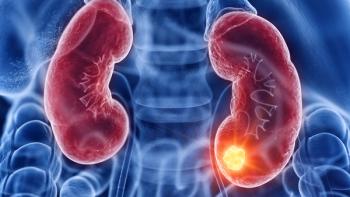
Real-World Data Supports Clinical Benefit of Tisagenlecleucel in Relapsed/Refractory B-Cell ALL
Tisagenlecleucel evoked similar efficacy and a preferrable safety profile in children and adults with B-ALL being treated in a real-world analysis, compared with the clinical trial ELIANA.
Children and young adults with relapsed/refractory B-cell acute lymphoblastic leukemia experienced similar efficacy outcomes and a more favorable safety profile after receiving tisagenlecleucel (Kymriah) in a real-world registry data, compared with data from the ELIANA trial (NCT02435849).
Findings from this registry, which were presented at the 2021 ASH Annual Meeting and Exposition, also demonstrated that safety and efficacy outcomes were consistent in patients both younger than and older than 18 years.
In particular, tisagenlecleucel “is an autologous T cell product directed against CD-19,” Samuel John, MD, division chief of hematology/oncology and Distinguished Chair in Pediatric Oncology Research at UT Southwestern Medical Center, said during the presentation. “The T cells identify and kill the patient's leukemia cells.”
In this noninterventional, prospective study, researchers analyzed data from the Center for International Blood and Marrow Transplant Research (CIBMTR) Registry of 561 patients up to age 25 years with relapsed/refractory B-cell acute lymphoblastic leukemia.
“Acute lymphoblastic leukemia is the most common form of childhood cancer,” John said during the presentation. “This specific subtype, B-ALL, accounts for greater than 80% of cases. Although the majority of pediatric patients with B-ALL have excellent outcomes, approximately 15% to 20% of patients will relapse. Outcomes for these patients are poor, with the five-year survival estimate of approximately 50%. Treatment options in the relapsed setting include intensified chemotherapy regimens, stem cell transplant and use of novel immunotherapy including chimeric antigen receptor T cells.”
All patients in this registry were treated with tisagenlecleucel after August 30, 2017, either in the United States or Canada.
“Tisagenlecleucel was approved in 2017 for the treatment of pediatric and young adult patients up to the age of 25 with relapsed refractory B-ALL,” John explained in the presentation. “The CIBMTR collects data on these patients who received commercial tisagenlecleucel. Early real-world data for tisagenlecleucel from the CIBMTR registry reported similar efficacy to that in the ELIANA clinical trial with no new safety signals.”
Researchers performed age-specific analyses in patients younger than (n = 389) and older than 18 years (n = 172) at the time tisagenlecleucel was administered. Efficacy was evaluated in patients with at least 12 months of follow-up and included duration of response, best overall response of complete remission, relapse-free survival, event-free survival and overall survival. Patients who completed the first assessment at 100 days were part of the safety evaluation in this study. There were several adverse events of interest including neurotoxicity and cytokine release syndrome, both of which were graded using the ASTCT criteria.
Although most patient characteristics were comparable at baseline, there were some factors that differed by age group. Patients 18 years and older had greater disease burden than those younger than 18, as shown by lower rates of morphologic complete remission and minimal residual disease negativity before infusion. In addition, older patients were more likely to be heavily pretreated before infusion versus the younger patients.
Efficacy in this study was assessed in 410 patients for a median of 25.9 months (range, 12-43.6). Overall response rates in this registry were 86.8% compared with 82.3% from the ELIANA trial. Minimal residual disease status information was available for 195 patients, of whom 97.9% were considered minimal residual disease negative.
Event-free survival at 12 months in patients with available efficacy information was 52.6% compared with 57.2% from the ELIANA trial. In addition, the duration of response at 12 months was comparable in both studies (61.4% vs. 67.4%, respectively).
At 12 months, relapse-free survival was 62.5% compared with 66% from the ELIANA trial. Both age groups had similar rates of relapse-free survival and overall survival.
Researchers assessed safety in 493 patients for a median of 23.9 months (range, 2-43.6). Most adverse events of interest to the researchers were observed within the first 100 days of infusion. Safety outcomes in patients from the CIBMTR registry were more favorable than those from the ELIANA trial.
“This may be related to a lower disease burden prior to T-cell infusion for patients treated with commercial tisagenlecleucel,” John said during the presentation.
From the registry, 22.9% had prolonged neutropenia and 21.9% had prolonged thrombocytopenia.
Safety data were mostly similar across age groups, although more patients 18 years and older had any-grade cytokine release syndrome or neurotoxicity. These adverse events were subsequently treated.
“Ongoing accrual of patient data into the CIBMTR registry will provide further insights into the use of tisagenlecleucel in the real-world setting,” John concluded.
Reference
- John S, Pulsipher MA, Moskop A, et al. Real-world outcomes for pediatric and young adult patients with relapsed or refractory (R/R) B-cell acute lymphoblastic leukemia (ALL) treated with tisagenlecleucel: update from the Center for International Blood and Marrow Transplant Research (CIBMTR) Registry. Presented at: 2021 ASH Annual Meeting & Exposition; December 9-14; Atlanta, GA. Abstract 428.
Newsletter
Knowledge is power. Don’t miss the most recent breakthroughs in cancer care.
























































































